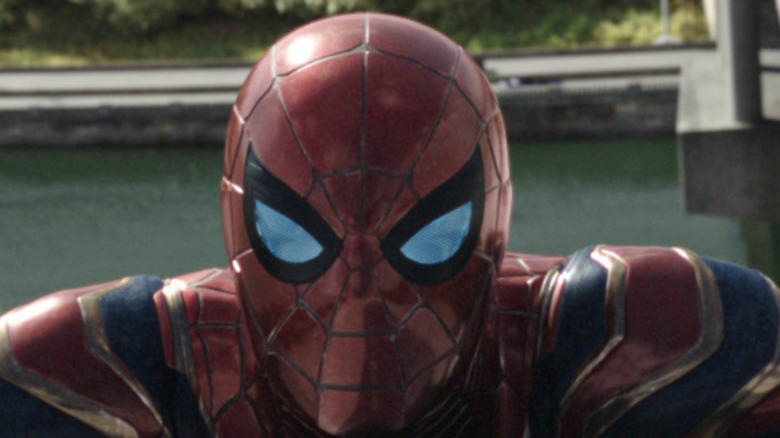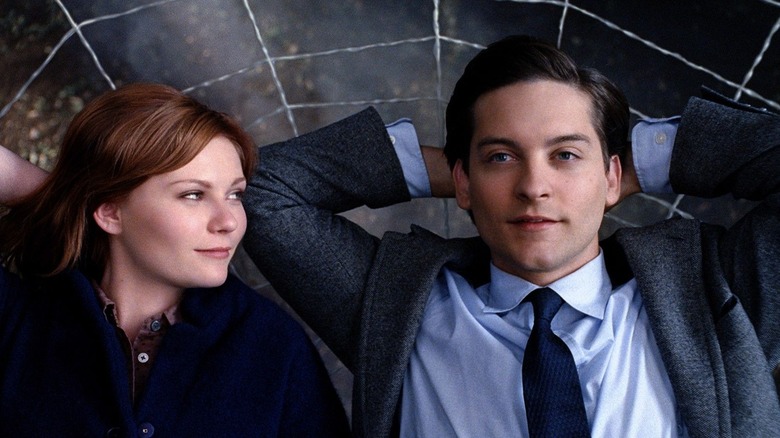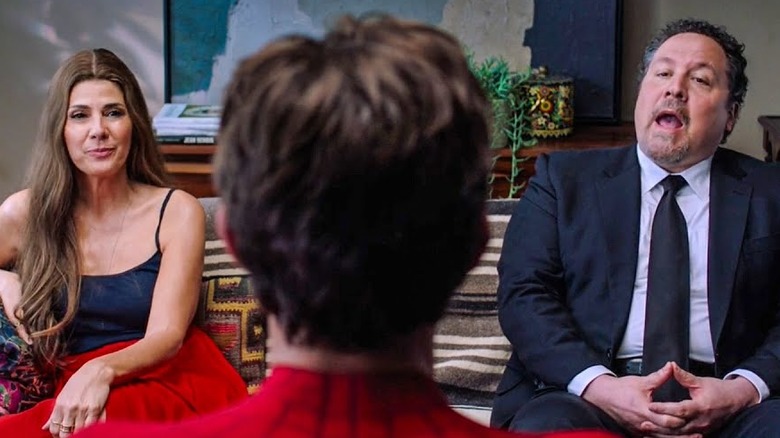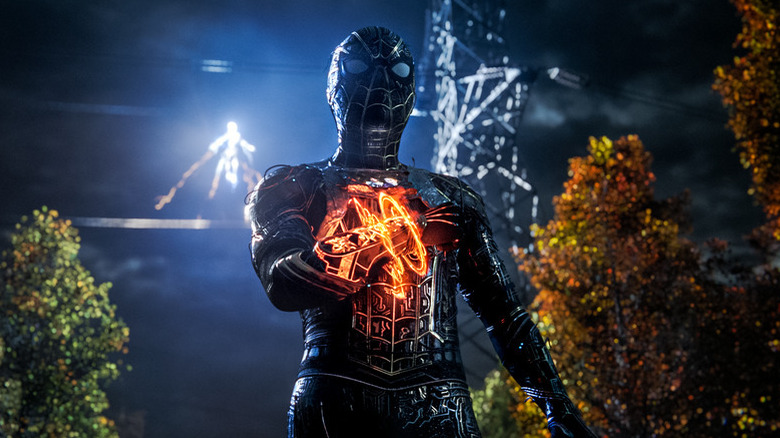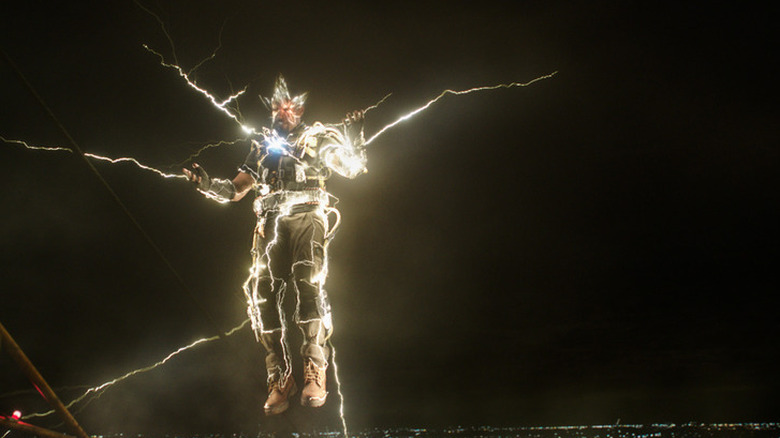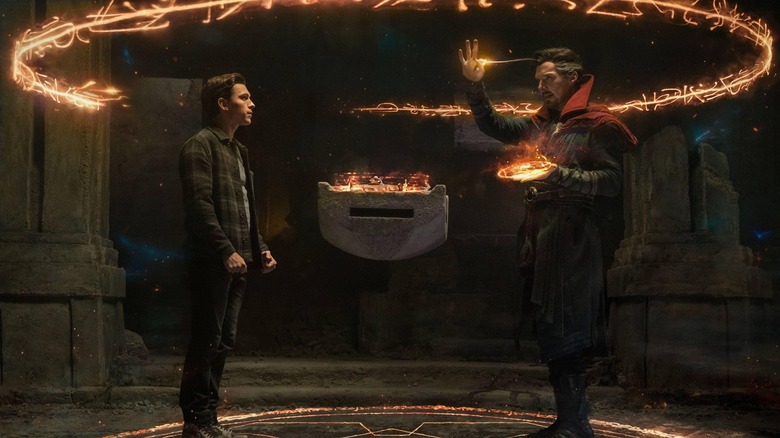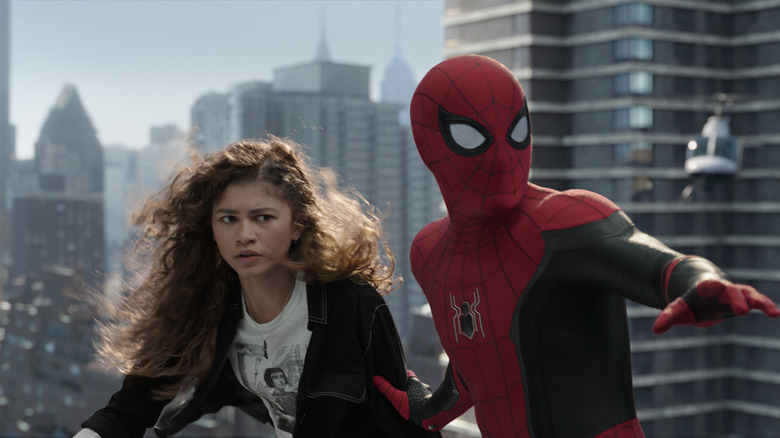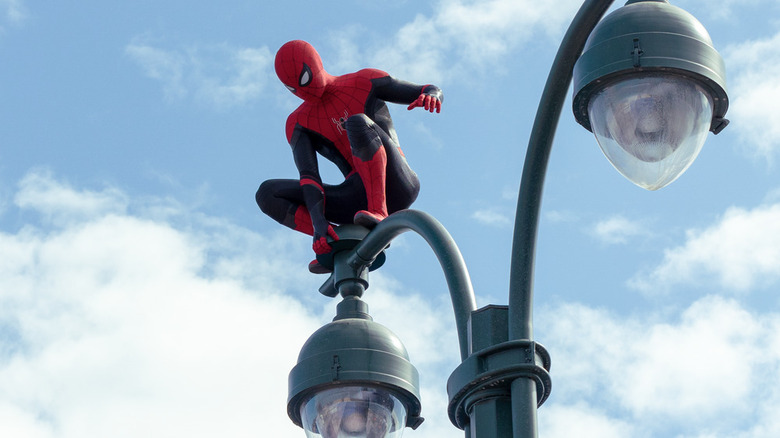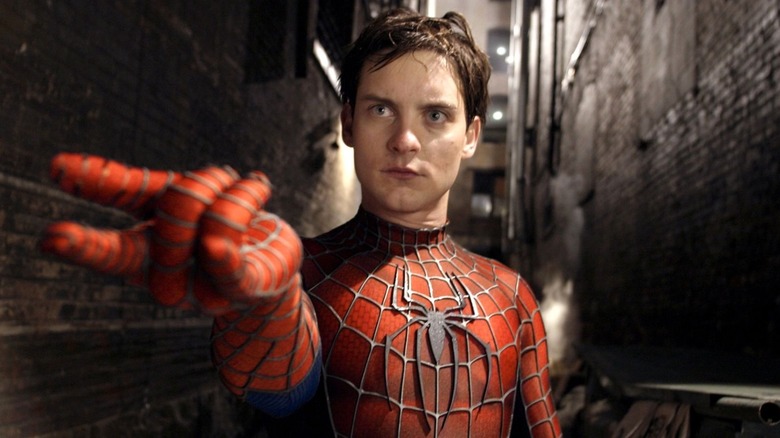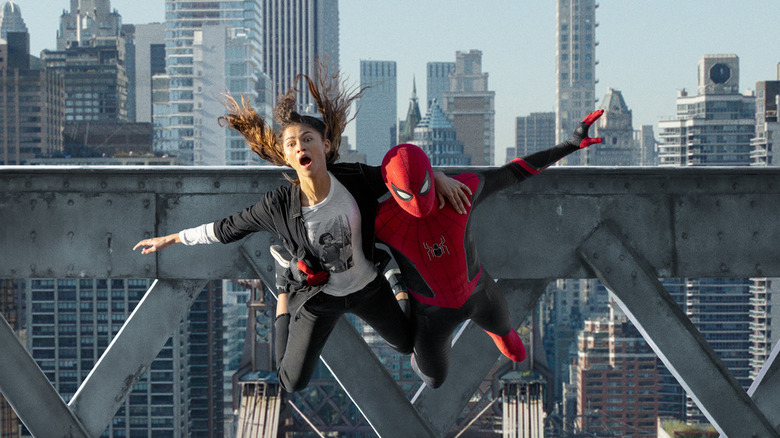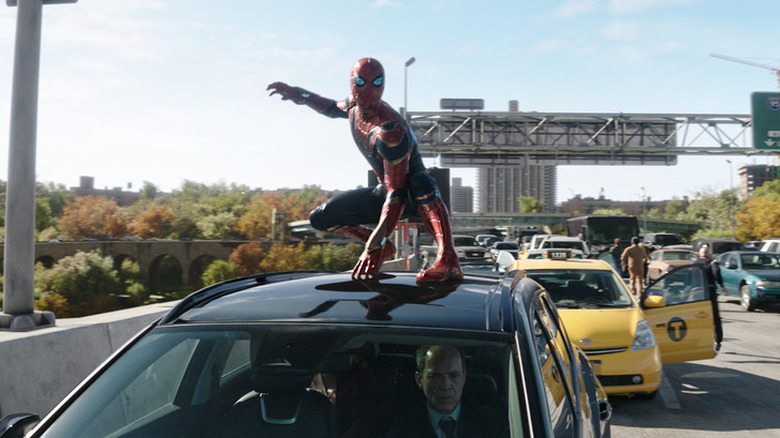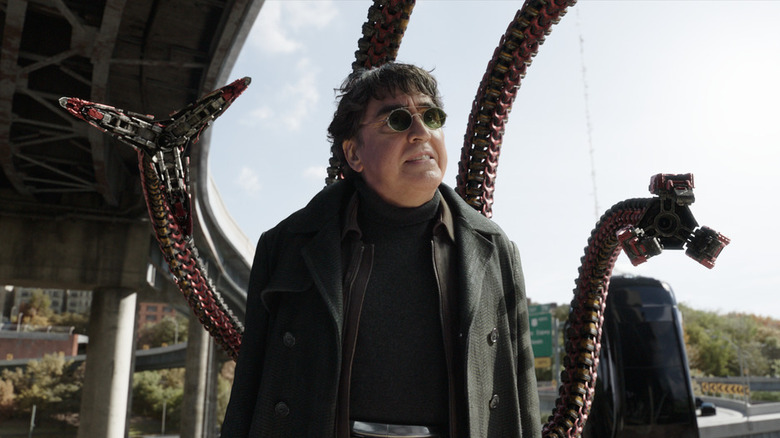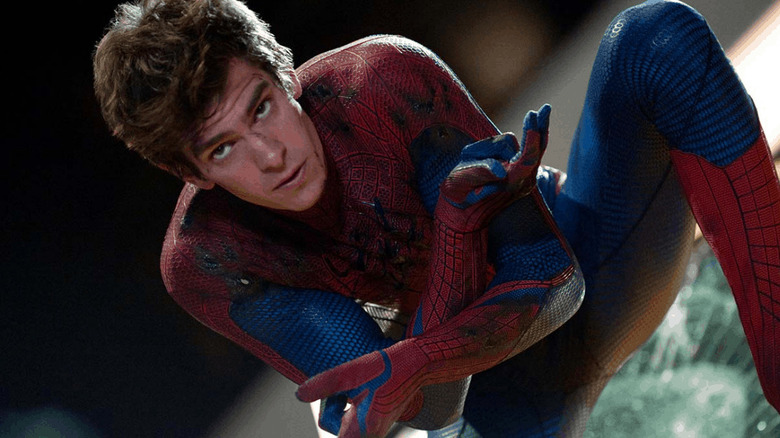6 Best And 6 Worst Things In Spider-Man: No Way Home
The following article contains major spoilers for "Spider-Man: No Way Home."
"Spider-Man: No Way Home" boasts two decades of nostalgia packed with more than a few punches to the gut and the heart. While the film makes fans question everything they've ever known about Spidey's most notorious villains, we see even more depth from our webbed heroes. With three franchises and seven movies to draw from, "No Way Home" has endless content to choose from when it comes to creating a live-action Spider-Man multiverse.
Yet despite the onslaught of familiar faces, both old and new, "No Way Home" manages to do what its predecessors struggled with: making full use of (most) of its villains. Whether it's Sam Raimi's OG Tobey Maguire trilogy or Marc Webb's "The Amazing Spider-Man" two-parter led by Andrew Garfield, each villain poses a fascinating character study that we just fail to explore in-depth. We could use much more of Green Goblin's power struggle in the OG films before his almost immediate defeat. And who wouldn't want to see more of The Lizard's inner battle? "No Way Home" focuses on the humanity of its villains without taking away the spotlight on our trio of web-slingers.
It's true: There are a whole lot more great aspects about the film than there are bad things, but every movie has its struggles. While "No Way Home" boasts better arcs for some villains, others fall short. And while Peter and Michelle save each other, he takes her autonomy away at the end. It was almost too difficult to find six things to criticize about "No Way Home," but here are the six best and worst things about Tom Holland's latest dalliance in his first Spider-Man trilogy.
Worst: Trouble in paradise for Peter and MJ?
Fans' blood went cold the minute Tobey Maguire's Peter says the two most dreaded relationship words someone can say regarding his romance with MJ: "It's complicated." Spider-Man fans everywhere first started rooting for these kooky kids back in 2002 and spent three films watching their will they/won't they romance play out on-screen. After all of that teenage angst, a fleeing bride, and an eventual implied happy ending, it's a slap in the face for a one-liner to potentially take it all away.
Look, we get it. Adult life is difficult enough when you're not a web-slinging superhero. Even the third film shows how tricky it is dating someone with a double identity and a penchant for saving lives at the drop of a mask. However, "No Way Home" doesn't really have the right to possibly retcon one of the most iconic couples in superhero history. MJ and Peter seemingly get their happy ending after a bit of a rough patch in "Spider-Man 3" over a decade before "No Way Home" released.
The franchise boasts a different writer and director, creative team, and cast (outside of Maguire), and it's not their place to take it away. Additionally, the throwaway line doesn't add anything to the story and only confuses audiences. We also hear Peter talk about MJ, saying, "We made it work." Not only is the past tense of that sentiment confusing, it further muddles the water of whether or not Peter and MJ are still going the distance. The moment clouds an otherwise epic cameo with a ton of heart.
Worst: Happy and May are reduced to comic relief
Let's face it. Happy and Aunt May aren't exactly a couple written in the stars, but he still deserves to be treated as more than a vehicle for comedy relief. It's pretty clear that Happy is a tad more invested in his non-relationship with May than she is, but he really gets the shaft in the third film. After May all but throws him out of her apartment, Peter comes home from the revelation of his outed identity to have another awkward family sit-down.Of course, Peter ignores the helicopters hovering over the building to initiate this uncomfy couple's counseling.
Happy and May's breakup tries to ease the tension of Peter's situation, but in hindsight, it's not very funny — especially given May's general compassion. Happy certainly needs to accept that they're not on the same page romantically. Still, May could break things off with Happy a bit more tactfully.
May's death is one of the most devastating scenes in Tom Holland's trilogy, but her death also means that her savage breakup with Happy is the last memory he has of her. He never really gets the closure he deserves or answers to why things didn't work out. And sure, that's life, but Happy is more than comic relief, yet that's all we ever really see him as.
Worst: Andrew Garfield's villains lack depth
When it comes to the villains in "No Way Home," the majority are given ample space to explore their psyches and work through some of their trauma. However, that majority is largely skewed toward Sam Raimi's set of villains. Whereas Green Goblin and Doc Ock truly work to better people, we miss out on those nuances with The Lizard and Electro from "The Amazing Spider-Man" series. Granted, both "The Amazing Spider-Man" villains are developed far more in their original films than Raimi's set, but fans would still like to see more from them in "No Way Home."
The Lizard and Electro are opposed to Tom Holland's Peter helping them, but they have no choice in the end. All three Peters force them into a cure, which isn't a great message when helping people is the tagline. Then, with little buildup, everyone is happy to be back to "normal." To an extent, that makes sense given that none of the villains featured are evil by nature per-say. It just feels a tad icky at times despite the good intentions.
The movie does what it can with its time, but it would be nice to see a bit more depth from "The Amazing Spider-Man" crew and even Raimi's Sandman. We get one great moment with Electro when he remarks his surprise that Spider-Man isn't Black but hopes that there is a universe where he is. Of course, Spidey fans know that this is a shoutout to Miles Morales — a version of Spider-Man from the comics and "Spider-Man: Into the Spiderverse."
Worst: Electro tarnishes Iron Man's memory
Okay, we get it. Tony Stark created some pretty incredible technological advances during his time at Stark Industries. Of course, that unbridled power would attract villains. However, some things are sacred — like Tony's arc reactor. It makes sense that MCU creators want to keep Iron Man's legacy alive in new projects, but there are other ways to accomplish that without insulting his memory.
When Electro uses Tony's arc reactor to harness the power of the sun, it's hard not to take the dastardly use of Iron Man's most iconic piece of tech personally. His arc is what kept the MCU's first superhero alive, and post-mortem, it would be nice if we could retire that particular piece of superhero history rather than allowing to corrupt and distort its purpose so long after Tony's death. Iron Man's memory deserves more than being a tool for villains to take advantage of. Didn't he get enough of that when he was alive? Hell, the guy is dead, and people are still using him. Let the man rest — he deserves it.
Worst: Strange's spell work is confusing and chaotic
Doctor Strange may be a pro at chaotic spell work with unintended consequences, but his botched jobs in "No Way Home" take the cake. Sure, we need a catalyst for the multiverse villains to appear in this world, but even for Strange, this is a lot. When Peter continually tries to intervene during Strange's spell, it becomes horribly unstable and blows up in both of their faces. But at the end of the day, Strange is an adult with more than enough experience to know better than to let Peter meddle with his spells. He caters to Peter's whims multiple times until Peter himself changes the incantation, but it should never get that far. Strange blames Peter for the bungled spell work, but look who his role model is.
Even worse, more than a few plot holes emerge regarding Strange's clumsy magic-wielding when all is said and done. Yet the worst of it comes at the end of the film when Peter asks Strange to do a spell to make everyone forget that he's Spider-Man — even Michelle and Ned. However, it doesn't just make them forget Spidey's identity. They don't remember Peter at all. Even students he's gone to school with for years (who knew Peter before his Spidey identity) forget him. We have no clue whether that's intentional or not on Strange's part. All in all, it's frustrating to end a trilogy with more questions than answers.
Worst: Peter takes away Michelle's autonomy
Peter Parker is nothing if not a self-sabotaging martyr in any of his iterations. Fans certainly love him for it, but his girlfriends don't. If Tom Holland's Peter had a bit longer to sit down with Maguire's Spidey, Peter and Michelle's relationship status might go a bit differently in the end. We spend the better part of the first two movies watching Peter pine over MJ during Raimi's trilogy to avoid her getting targeted by his enemies. Yet despite never really being together in the first films, Peter's foes continually put her in danger anyway just by being in his orbit.
With the completely trusting partnership Peter 3.0 has cultivated with his own MJ, it's disheartening when he takes away her autonomy over their relationship. Michelle knows the risks of being Spider-Man's girlfriend, and she's more than capable of holding her own (and already has). But once everyone's memory of Peter goes away with Strange's spell, he decides that she should live her life without him after noticing the tiny cut on her forehead from the battle.
Peter made a promise to Michelle before the spell that he would find her and tell her everything that happened so they could work on rebuilding their relationship. Instead, he pockets his speech and walks away, taking her choice away from him. And unlike OG MJ, she doesn't even know their history to fight for him, making it that much more heartbreaking and cruel. She's likely going to walk around feeling like she's missing something from her life while Peter continues to be a miserable martyr.
Best: Three Spider-Men walk into a multiverse
You'd be hard-pressed to find someone who doesn't think that the ultimate three Spidey team-up isn't the best part of "No Way Home." Taking three Peters from Spider-Man universes hailing from different decades could have ended in disaster. Still, writers Erik Sommers and Chris McKenna seamlessly pull it off alongside director Jon Watts and, of course, the web-slinging actors themselves.
Without missing a beat, Tobey Maguire and Andrew Garfield dusted off their cobwebs and delivered heartfelt performances with their usual dash of humor and one-liners. Fans can even argue that their respective cameos are even better than their original roles. Just like their characters have grown up and gotten wiser, so have the actors — and it shines brilliantly in their reprisals.
These cameos could have been shallow and fleeting, but instead, they each have meaningful character arcs in their quest to help the next generation's Spidey. And that credit goes to everyone who worked on the project. It would have been such a letdown to see the OGs come back for a frivolous minute or two, but we get to know this older iteration of our heroes, and it's a gift. It also doesn't hurt that the trio lives out the animated three Spider-Men pointing meme when Nate tries to get Peter's attention despite all three having the same name. Iconic? Check.
Best: OG Peter prevents Peter from repeating his mistakes
Tobey Maguire's Peter Parker spends a good part of the franchise struggling with his thirst for vengeance. Between his quest to find (and kill) Uncle Ben's killer to being somewhat responsible for Norman Osborn's death, quite a few people have died at the hands of our friendly neighborhood Spider-Man. In "No Way Home," we see Tom Holland's Spider-Man grapple with a similar mission to even the score after Green Goblin kills Aunt May.
However, Maguire's Peter can't stand the idea of watching another Peter go down this dark path and stops him from becoming a cold-blooded killer. Earlier, our OG Peter says that he's "trying to do better," — a repeated line from the original trilogy. He extends this same effort to Peter, hoping that he'll make better choices than he did.
Luckily, in a powerful moment, Holland's Peter does. The moment our 2002 Peter Parker convinces Peter to spare Norman, he hands the baton to Holland, allowing a new generation — a better generation — to take it from here. Watching Maguire's Peter get some closure and peace through helping a younger version of himself is a beautiful moment that mends some of his old scars. It's a depth that we really missed from Peter in the original films, and it's lovely to see just how far our OG Spidey has come.
Best: Peter and Michelle save each other
One of the biggest flaws superhero films fall into even in modern times is making its women helpless damsels who need saving every five minutes. The original "Spider-Man" trilogy is more guilty of this than arguably any other franchise, with MJ falling into serious danger multiple times in a single film and rendered helpless until Peter comes onto the scene. In "No Way Home," Michelle and Peter save each other on countless occasions in an equal partnership.
The update on the usual trope is a refreshing signal that times are changing, and so must our superheroes (and their leading ladies). Everyone needs help sometimes — even superheroes — and it's nice to see Peter accept assistance from someone he loves instead of pushing it away. If you're going to have a woman by your side when you're fighting crimes and taking names, Michelle Jones is the best out there. And she's not afraid to call Peter out when he needs it, either.
Best: Peter remembers how to be a human
When you grow up with the Avengers, it's easy to get into a mentality that every problem needs solving via magic or a heavy-duty piece of Stark Industries tech. However, the MCU's Peter Parker is still a teenager with typical human issues — like not getting into college. Sure, the reason he doesn't get into MIT is rooted in the fact that he's spent the last years of his life running around as Spider-Man. Still, before trying to magically whammy the world with an amnesia spell, Peter really should have contacted the school to explain his position.
Once Doctor Strange calls him out on this serious lack of critical thinking, Peter does find someone at MIT he can plead his case to. Using his typical charm, he wins her over. Of course, by nature, Peter is a hero, so that element plays a part when he saves the woman's life. Still, he puts the onus on himself, goes to talk to her as a person, and just happens to run into Doc Ock along the way. Either way, Peter takes autonomy over his situation and fights for a spot at MIT just by being himself.
Best: Doc Ock gets his hero moment and Green Goblin shines
Doc Ock is one of Spider-Man's most fleshed-out foes when it comes to the villains from the OG "Spider-Man" trilogy. His journey has three parts: Doc's initial introduction to his noble cause, his villainous descent, and ultimately, reclaiming his kindhearted nature and defeating himself. "No Way Home" expounds on his already developed arc and makes it even better by bringing fans even more of Ock's humanity. While he does ultimately save the day in the second "Spider-Man" film, "No Way Home" allows him to truly become the hero and save his fellow villains in the process.
Many of Spider-Man's villains deserve much more space to explore their humanity and villainhood than the original films allow — even Doc. His character would be an epic masterclass on villainy had his arc lasted more than half of one film.
The same can be said for the first film's Green Goblin, however. Even before Norman turns into the Goblin, he isn't winning any father of the year awards. The villain barely grapples with his humanity even when he's fighting off his evil alter ego, and it's hard to root for the guy when he has so little substance. "No Way Home" corrects that by giving Norman proper space to make better choices, access his humanity, and try to remain the dominant personality. Moreso than their original appearances, both villains get concrete storylines that correct some of the superficiality in the OGs.
Best: Andrew Garfield's Peter gets a re-do
Gwen Stacy's death in "The Amazing Spider-Man 2" is one of the most gripping and heartbreaking scenes in any of the Spidey films released before "No Way Home." Many fans don't give Garfield the credit his Spidey deserves, but he nails this moment — and its 2.0 counterpart in "No Way Home."
When Michelle falls off the Statue of Liberty in an identical way to Gwen, it's not her own Peter who saves her, but Garfield's. Setting aside his own trauma, he leaps into action and catches Michelle, to spare this universe's Peter from going through the same eternal grief and guilt as he did. The look on Garfield's face after he saves her is enough to bring even the most cold-hearted villain to tears, and the moment is one of the best in the entire film.
"No Way Home" gives Garfield's Peter the nuanced and deep ending for his character that he's always deserved. It's clear that Peter hasn't moved on from what happened to Gwen, and saving Michelle gives him the closure he needs to move on with his life and start living it fully again. This is the growth and closure we needed in the third film that never happened, and Garfield fans couldn't be more grateful.
